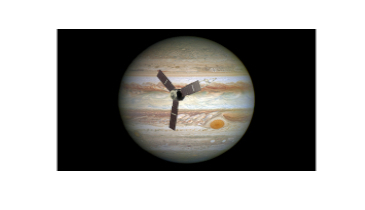Jovian Lightning
Psalm 19:1
“The heavens declare the glory of God; and the firmament sheweth his handywork.”
 I have met many people who are terrified of lightning. To some extent, they are justified in their fears. Lightning represents a tremendous force which can often be destructive. A lightning bolt is essentially a large spark due to the discharge of a high buildup of static electrical charge.
I have met many people who are terrified of lightning. To some extent, they are justified in their fears. Lightning represents a tremendous force which can often be destructive. A lightning bolt is essentially a large spark due to the discharge of a high buildup of static electrical charge.
Imagine, if you will, a lightning bolt 40 miles long. Imagine such bolts – three times larger than the most extreme lightning bolts on Earth – being a frequent feature of storms in a planet’s atmosphere. We don’t have to imagine such bolts of lightning; they are real. This is the nature of lightning in the atmosphere of the planet Jupiter.
These amazing electrical storms are being observed simultaneously by three sources: the ground-based Gemini Observatory in Hawaii, the Hubble Space Telescope, and the Juno spacecraft.
Juno’s elliptical polar orbit takes it low over Jovian storms every 53 days, at which times it collects data from the radio outbursts from the huge lightning bolts. Hubble is able to measure the depth of the various cloud formations causing the lightning, and Gemini can detect where there are clear areas between storms. Hubble and Gemini provide context for the interpretation of Juno’s data.
There are those who might wonder why we care about such missions. For my part, I think that, whether they realize it or not, NASA missions like these provide further grounds for declaring the glory of God. It is He who made Jupiter for His glory, and we watch and praise Him.
Prayer: We praise Your Name, our Lord God, because the heavens declare Your glory. Amen.
Author: Paul F. Taylor
Ref: NASA/Goddard Space Flight Center. “Telescopes and spacecraft join forces to probe deep into Jupiter’s atmosphere.” ScienceDaily, 7 May 2020. <www.sciencedaily.com/releases/2020/05/200507163959.htm>. Image: Composite image from two public domain NASA images.
© 2021 Creation Moments. All rights reserved.